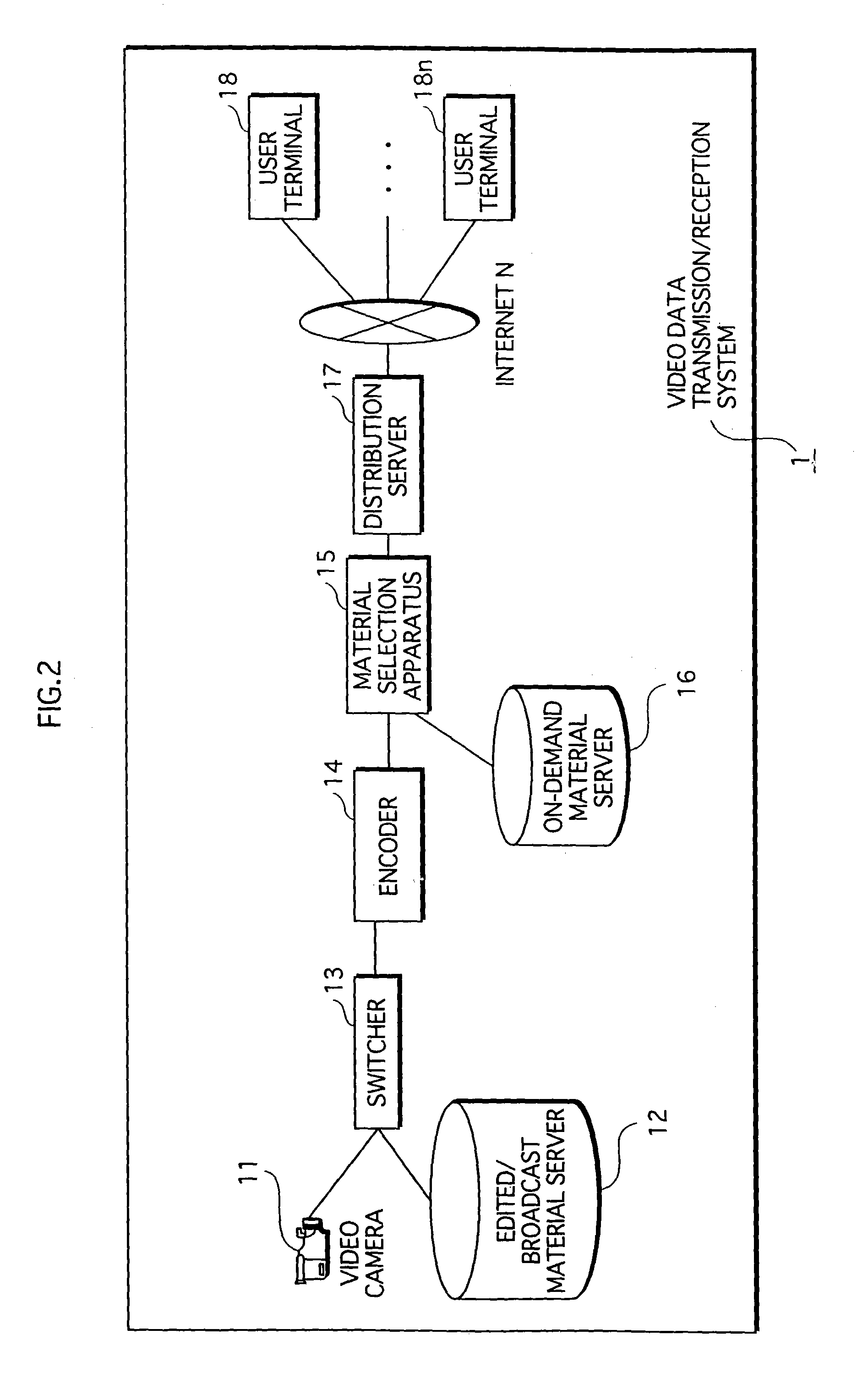Video data transmission/reception system in which compressed image data is transmitted from a transmission-side apparatus to a reception-side apparatus
a video data and reception system technology, applied in the field of video data transmission/reception system, can solve the problems of increasing the processing load of the user terminal, heavy load on the user terminal, and the period of time in which video is not displayed, so as to achieve the effect of increasing the processing load
- Summary
- Abstract
- Description
- Claims
- Application Information
AI Technical Summary
Benefits of technology
Problems solved by technology
Method used
Image
Examples
modification example
[0132]The system 1 in the above-described embodiment enables broadcast video data to be correctly decoded when interruption / resumption of transmission of broadcast video caused by transmission of on-demand video data occurs. In contrast, the following modification example solves a problem that arises in a user terminal that is able to receive a plurality of types of broadcast video data. The problem is that when switching from one type of broadcast video data to another, the user terminal may not be able to correctly decode the broadcast video data after switching until the next GOP, depending on the type of frame of broadcast video data that is received directly after the switch.
[0133]The following describes the system of this modification example. Much of the structure of this system is the same as the system of the embodiment, and therefore the following description focuses of the differences.
[0134]In a system 9 in FIG. 10, a plurality of types of broadcast video data is provided...
modification example 2
[0146]One possible service is one in which, during transmission of particular on-demand data (first on-demand data), transmission of other on-demand data (second on-demand data) interrupts the transmission of the first on-demand data, and then transmission of the first on-demand data resumes. In this case the same problem arises directly after switching from second on-demand data to first on-demand data as in the above-described embodiment. The present modification is a system that deals with this kind of switch.
[0147]FIG. 12 shows a material selection apparatus 15A in a video data transmission / reception of the present modification. The characteristic compositional element of the present modification is an on-demand data reading unit 155A in the material selection apparatus 15A. In addition to switching on-demand video data that is output to a particular terminal, the on-demand data reading unit 155A outputs substitute I frame data before switching back to first on-demand video data...
PUM
 Login to View More
Login to View More Abstract
Description
Claims
Application Information
 Login to View More
Login to View More - R&D
- Intellectual Property
- Life Sciences
- Materials
- Tech Scout
- Unparalleled Data Quality
- Higher Quality Content
- 60% Fewer Hallucinations
Browse by: Latest US Patents, China's latest patents, Technical Efficacy Thesaurus, Application Domain, Technology Topic, Popular Technical Reports.
© 2025 PatSnap. All rights reserved.Legal|Privacy policy|Modern Slavery Act Transparency Statement|Sitemap|About US| Contact US: help@patsnap.com



